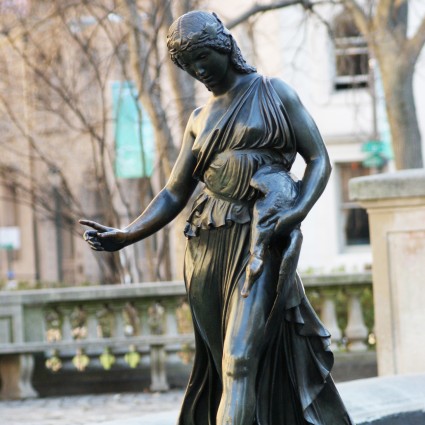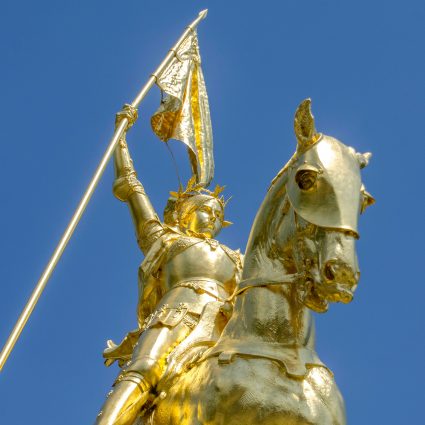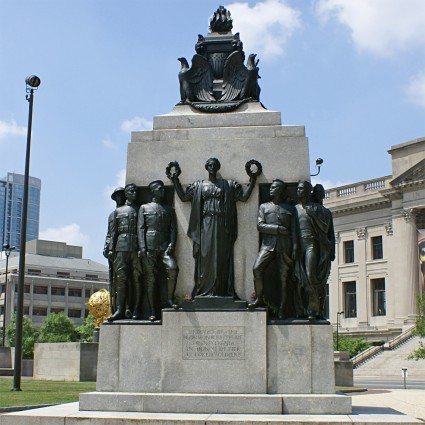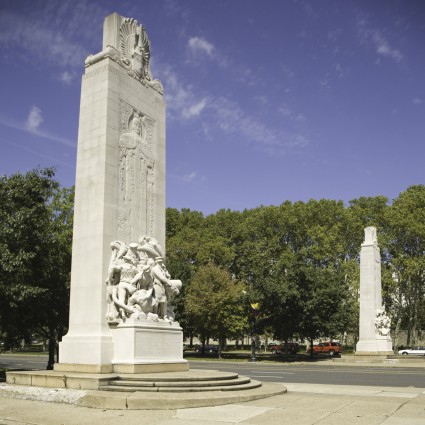At A Glance
Dedicated to the aviators who died in World War I
Illustrates the signs of the zodiac
Paul Manship is also known for Duck Girl in Philadelphia’s Rittenhouse Square and Prometheus in New York City’s Rockefeller Center
The bronze sphere opposite the main entrance of the Franklin Institute is dedicated to the aviators who died in World War I. Inscribed with the Latin names of constellations and planets, the Aero Memorial illustrates the signs of the zodiac in a style that recalls both classicism and Art Deco.
Manship had already executed a number of similar spheres, including one for the Woodrow Wilson Memorial
The artist Paul Manship was a leading figure in American sculpture for several decades. Profoundly influenced by classical Roman and archaic Greek Art, he received many major sculpture awards in the United States and abroad, and his famous Prometheus dominates Rockefeller Center in New York. Duck Girl in Rittenhouse Square is one of his early works.
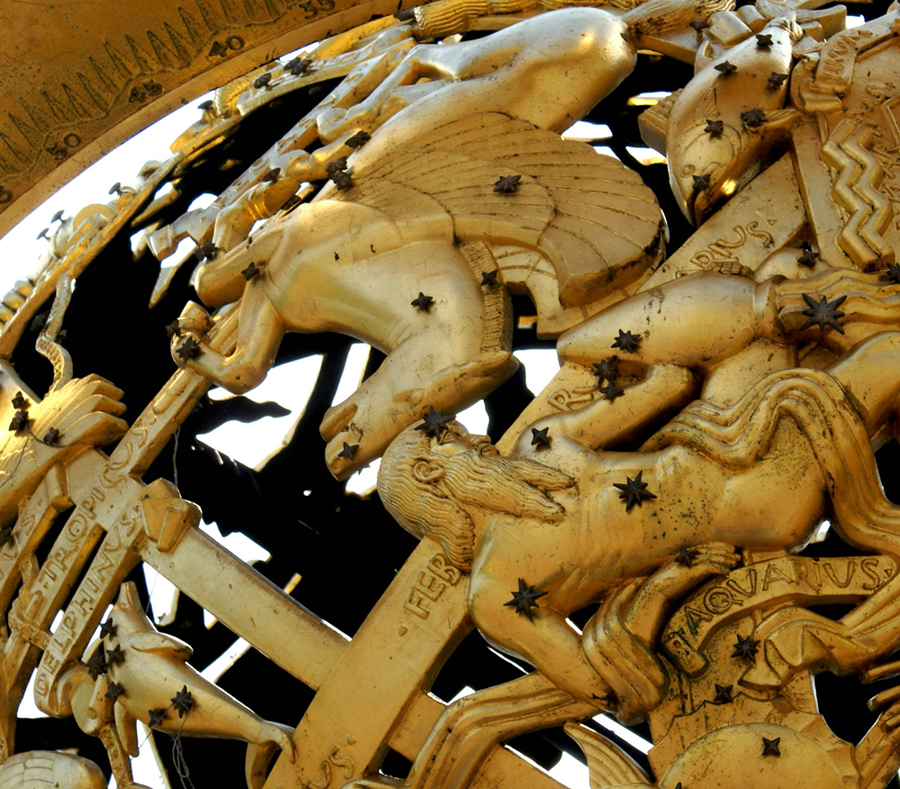
The idea for Aero Memorial was conceived by the Aero Club of Pennsylvania, which donated modest funds for the purpose to Fairmount Park Art Association (now the Association for Public Art) in 1917. Fundraising took many years and the work did not begin until 1939, when the Art Association contacted Manship.
The idea of a celestial sphere was finally approved in 1944. Manship had already executed a number of similar spheres, including one for the Woodrow Wilson Memorial at the League of Nations in Geneva. Philadelphia’s Parkway Globe, which measures six feet in diameter, was set on a base designed by Joseph P. Sims in 1949, and was dedicated on June 1, 1950.
Adapted from Public Art in Philadelphia by Penny Balkin Bach (Temple University Press, Philadelphia, 1992) and Sculpture of a City: Philadelphia’s Treasures in Bronze and Stone by the Fairmount Park Art Association (now the Association for Public Art) (Walker Publishing Co., New York, 1974).
Voices heard in the Museum Without Walls: AUDIO program: David Contosta is a professor of history at Chestnut Hill College and the author of Philadelphia Family: The Houstons and Woodwards of Chestnut Hill. Erik Natti is a retired teacher and Paul Manship’s grandson. Rebecca Reynolds is an art historian and author of Manship: Paul, John, Margaret – A Retrospective. | Segment Producer: Lu Olkowski
Museum Without Walls: AUDIO is the Association for Public Art’s award-winning audio program for Philadelphia’s outdoor sculpture. Available for free by phone, mobile app, or online, the program features more than 150 voices from all walks of life – artists, educators, civic leaders, historians, and those with personal connections to the artworks.
RESOURCES:
This artwork is part of the Along the Benjamin Franklin Parkway tour
